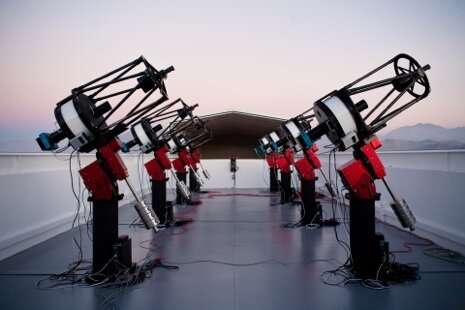K2-25: An eccentric hot Neptune with the mass of seven Earths

Of the roughly 4,300 exoplanets confirmed to date, about ten percent of them are classified as "hot Jupiters." These are planets with masses between about 0.4 and 12 Jupiter-masses and orbital periods less than about 110 days (implying that they orbit close to their star—usually much closer than Mercury is to the Sun—and have hot surface temperatures). A "hot Neptune" has a smaller mass, closer to that of Neptune which is about twenty times less than Jupiter, and which also orbits close to its star. Astronomers study not only the properties of exoplanets but also how they evolved within their planetary systems. Hot Jupiters and hot Neptunes are puzzles. They are expected to have formed much farther out in the cold reaches of their systems as did the giant planets in our Solar System and then to have migrated inward to their current, close locations. Evidence supporting this evolutionary history should be found in the planets' orbital eccentricities and other clues, but is difficult to obtain.
CfA astronomers Jonathan Irwin, David Charbonneau and Jennifer Winters were members of a team that probed the evolution of the hot Neptune K2-25, a transiting exoplanet with an orbital period of only 3.48 days, an estimated mass of roughly about seven Earth-masses, and a highly eccentric orbit (value of 0.27; its maximum distance from the star exceeds its minimum distance by about 70%). K2-25 has the advantage of being in a young stellar cluster whose age is well-constrained at about 650 million years. This young age tests whether there is time for the migration mechanism to work, whether or not such a process could leave the planet with its large observed eccentricity, and not least, whether such a young host star might be active enough to have complicated the dataset with starspots (the star itself is seen to rotate in 1.88 days).
The team analyzed twenty-two non-consecutive transits of the planet obtained from the MEarth ground-based observatories, the IRAC/Spitzer mission camera, and the Kepler mission, modeling each of the transits separately before merging the conclusions. They estimate that the timeframe for an orbit to become circular after migration is about 410 million years, roughly the age of the system, and thus the fact that the orbit is eccentric suggests some other body may be perturbing it. The scientists searched for evidence of other planets in the system that could be responsible by looking for variations in the K2-25's transit lightcurves, slight differences that would result from their gravitational presence ("transit timing variations"). They found none. The result, although it leaves room for ambiguity, is consistent with the theory that this hot Neptune migrated inward.
More information: Isabel J. Kain et al. The Young Planetary System K2-25: Constraints on Companions and Starspots, The Astronomical Journal (2020). DOI: 10.3847/1538-3881/ab655b
Journal information: Astronomical Journal
Provided by Harvard-Smithsonian Center for Astrophysics




















